Topic
The Easiest Way to Handle Heavy Lifting on Your Next Project
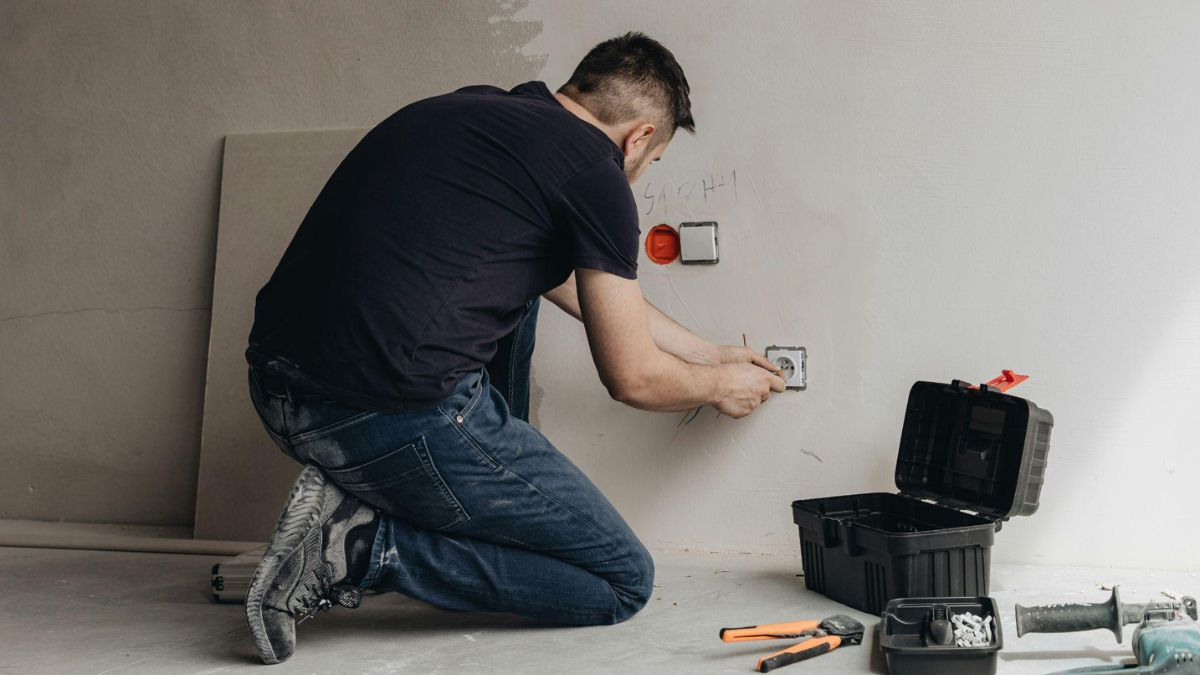
Taking on heavy-duty projects, like home renovations or landscaping, can feel overwhelming, especially when they involve lifting large materials or reaching high places. These jobs are physically demanding and can quickly turn frustrating without the right tools. But, it doesn’t have to be that way. With the right rental equipment, tasks that seem impossible can become much more manageable. In this post, we’ll dive into the perks of renting specialized equipment, like lifts or other machinery, and how it can help you tackle tough jobs with ease. Ready to make your next big project a breeze? Keep reading!
Why Renting Equipment Makes More Sense Than Buying
When it comes to getting the job done, owning equipment might seem like the smart move. But unless you’re using it regularly, renting often makes a lot more sense. Think about it: buying heavy machinery means upfront costs, maintenance, storage, and repairs. That’s a big investment for tools that might sit around most of the year. Plus, equipment can quickly lose its value, and before you know it, you’re stuck with outdated or broken-down gear that requires even more money to fix.
Renting, on the other hand, gives you flexibility and peace of mind. You only pay for what you need, when you need it, without the long-term commitment. Most rental companies take care of all the upkeep and repairs, so you don’t have to. That means the equipment is usually well-maintained, up-to-date, and ready to use as soon as you need it. It’s also great if your project requires a range of tools—you can simply rent what’s needed for each task, instead of purchasing a bunch of specialized items you might never use again. For one-off projects or seasonal tasks, renting is clearly the smarter, more cost-effective solution.
Lifting Heavy Loads Without the Strain
Projects that require heavy lifting or reaching high places can be a real pain. Whether it’s stacking materials on a construction site, doing roof repairs, or trimming tall trees, these tasks are not only time-consuming but also physically demanding. Without the right tools, you could spend hours struggling, risk injury, or end up frustrated with the lack of progress.
That’s where the beauty of equipment rentals comes in. Tools like electric scissor lift rentals provide a safe, stable, and efficient way to get tough jobs done. These lifts give you the height and reach you need without the hassle of climbing ladders or making risky moves. Imagine how much faster you could finish a job when you’re not constantly repositioning a ladder or worrying about safety. Plus, the electric models are easier to operate, quieter, and more eco-friendly than gas-powered alternatives. By renting the right tool for the job, you’re not only saving yourself from strain but also speeding up your entire project. It’s all about working smarter, not harder—and that’s something we can all get behind.
Safety and Convenience Are Key When Handling Tough Jobs
Let’s face it—safety should always be a top priority, especially when dealing with heavy-duty tasks. Whether you’re a seasoned pro or a weekend DIY warrior, using the right equipment can make a massive difference in both safety and convenience. Rental equipment, especially from reputable companies, is usually well-maintained and regularly inspected, meaning you can trust that it’s in good working condition. That peace of mind is priceless when you’re tackling a challenging project.
Consider the risks of using outdated or makeshift tools. Wobbly ladders, overworked backs, and unreliable equipment can turn a simple project into an accident waiting to happen. With rental gear like lifts or other specialized tools, you reduce the chances of injury, ensuring you can work efficiently and safely. Plus, having access to professional-grade equipment saves you time. Instead of improvising, you can focus on getting the job done right, without cutting corners. It’s all about making the tough jobs easier and safer so you can finish strong and injury-free.
How Renting Tools Can Help You Finish Projects Faster
Time is money, and there’s no denying that using the right tools can drastically cut down the time it takes to complete a project. Whether you’re remodeling a space or working on an outdoor construction task, the right equipment can shave off hours, if not days, of hard labor. When you rent specialized gear, like lifts, excavators, or even power tools, you’re equipping yourself to do the job faster and with far less hassle.
Instead of making do with what you have at home—like that old, rusty ladder or manual tools that require more muscle than they should—renting the proper equipment ensures each task is done efficiently. You can eliminate wasted time and frustration by using machinery designed to handle specific tasks with precision. Need to reach a high ceiling for painting or repairs? Renting a lift means you won’t waste hours climbing up and down ladders. Instead, you’ll have the height, control, and safety to breeze through the project. It’s all about working smarter, not harder, and rentals allow you to do just that.
Making the Most of Your Rental Experience
Renting equipment might seem straightforward, but there are a few tips and tricks to ensure you get the most out of your rental experience. First off, always plan ahead. Think about the specific tools you’ll need and for how long. It’s tempting to overestimate, but sticking to what’s essential will save you money and hassle. Also, understanding how the equipment works before you take it to the job site can save a lot of frustration. Most rental companies will give you a quick demo or run-through, but it’s a good idea to ask questions and be familiar with the controls to avoid wasting time during your project.
Another key tip is to choose a reputable rental company. Look for one that maintains its equipment well and has a wide range of tools to choose from. You want gear that’s reliable and in top shape so you can hit the ground running. Also, keep in mind that returning equipment on time and in good condition is crucial. Late returns or damage can lead to extra fees, so it’s always a good idea to handle rental tools with care and stick to the agreed timeline. If you follow these tips, you’ll ensure a smooth rental experience, and your project will be all the better for it.
Conclusion
Renting equipment is a game-changer for any heavy-duty project. Whether you’re handling tough tasks that require lifting, reaching, or specialized tools, rentals offer a flexible, cost-effective solution. Not only do they save you from the expense and hassle of ownership, but they also make projects safer and more efficient. From scissor lifts to excavators, the right rental tools allow you to work smarter, faster, and without the usual strain. So next time you’re staring down a big job, consider renting the gear you need and take the stress out of heavy lifting.
Topic
How Emergency Standby Power Keeps Critical Systems Running During Outages
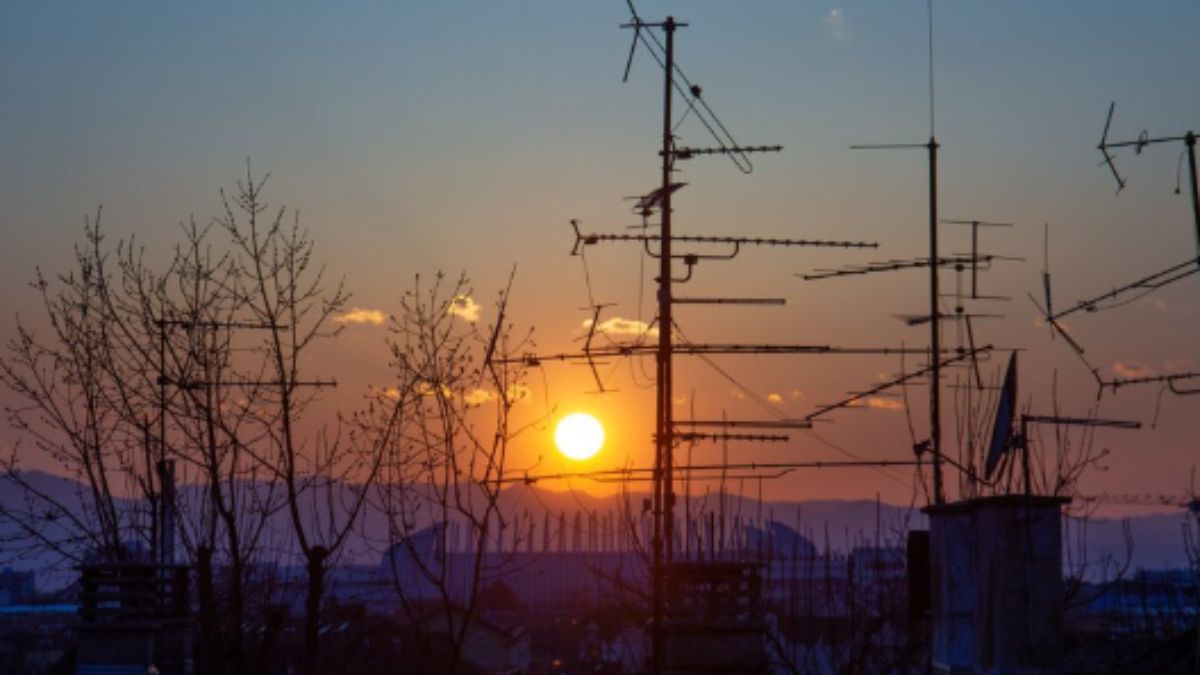
Power outages can strike without warning, disrupting homes, businesses, and critical infrastructure. Whether caused by storms, equipment failure, grid overload, or maintenance issues, these outages can lead to substantial financial losses, safety hazards, and operational setbacks. For facilities that rely heavily on continuous electrical power, such as hospitals, data centers, manufacturing plants, and emergency response centers, losing electricity for even a few seconds can have severe consequences.
Emergency standby power systems provide a lifeline in these situations. Designed to automatically supply electricity when the primary power source fails, these systems ensure that important equipment and services remain operational. They prevent business disruption and protect lives, data, and assets in environments where downtime is simply not an option.
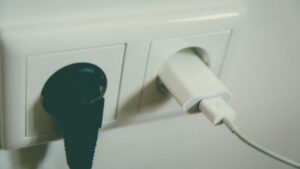
The Role of Standby Generators in Power Continuity
At the heart of most emergency standby power systems is a standby generator. These generators are designed to automatically start when an outage is detected and provide power until utility service is restored. Unlike portable generators that require manual activation and limited capacity, standby generators are permanently installed and integrated into a building’s electrical system.
They are typically fueled by diesel, natural gas, or propane, and are capable of powering entire facilities or designated circuits depending on the system design. When properly sized and maintained, standby generators can run for hours, or even days, without interruption.
What makes them truly valuable is their ability to engage automatically and seamlessly. The moment a disruption is sensed, the system reacts within seconds to restore power, ensuring minimal downtime and no manual intervention during a crisis.
Why Transfer Switches Are Important
A critical component of any standby power system is the transfer switch. This device detects a failure in the utility power and shifts the electrical load to the generator. Once utility power is restored, the switch transfers the load back, allowing the generator to shut down safely. Facilities looking to streamline this process often search for automatic transfer switches for sale to upgrade their emergency systems with faster and more reliable switching capabilities. These switches are crucial in maintaining uninterrupted service in high-stakes environments like healthcare facilities or emergency response centers.
Automatic transfer switches work by constantly monitoring voltage from the utility line. When a drop or loss is detected, the switch initiates generator startup and transitions power to the standby source. Once normal service resumes, the switch completes the transfer back and signals the generator to cool down and shut off. This sequence happens without human input, eliminating delays and reducing risk.
Applications That Depend on Standby Power
While most buildings benefit from some level of backup power, certain sectors absolutely require it. Hospitals and healthcare clinics use standby systems to keep life-saving equipment functioning during grid failures. Critical functions such as ventilators, monitors, electronic records, and surgical instruments cannot afford even brief interruptions.
Data centers depend on uninterrupted power to prevent data corruption, service downtime, and network instability. Many modern business operations, from e-commerce to cloud storage, rely on real-time data availability and uptime guarantees. For these organizations, power continuity is not a luxury, it’s a contractual and operational requirement.
Manufacturing plants use standby power to keep machinery running and protect sensitive production lines from abrupt halts that can cause quality issues or equipment damage. Cold storage facilities use it to preserve inventory, while communication centers use it to maintain connections during emergencies.
System Design and Customization
The effectiveness of a standby power solution depends heavily on how well it’s designed for the specific needs of the facility. A thorough assessment is necessary to determine which systems and circuits require backup, how much power is needed, and what kind of generator and transfer switch will best serve the environment.
Some facilities require whole-building coverage, while others may only need to power critical systems like emergency lighting, refrigeration, or IT infrastructure. The size and fuel source of the generator must align with usage patterns and runtime expectations. The location of the generator must meet ventilation, accessibility, and noise regulations.
Customization ensures efficiency and cost-effectiveness. Over-sizing a system leads to unnecessary expenses, while under-sizing can result in power failures during high-demand periods. Professional installation and consultation are key to ensuring that the standby system performs reliably when it’s needed most.
Maintenance and Testing
Installing an emergency standby power system is only the first step. Ongoing maintenance and periodic testing are key to ensure the system will operate correctly in the event of an outage. Generators should be inspected regularly for fuel levels, oil quality, battery charge, and coolant condition. Transfer switches should be tested to confirm proper functionality and response times.
Most industry standards recommend monthly testing, including full-load tests under simulated outage conditions. This verifies that the generator will start and sustain the load and exercises the system to keep components in working condition.
Failing to maintain the system increases the risk of failure during a real emergency. Scheduled inspections, service contracts, and record-keeping contribute to the longevity and dependability of the equipment.
Compliance and Regulatory Considerations
Standby power systems must comply with national and local codes when used in regulated industries. Healthcare facilities are subject to guidelines from organizations such as the National Fire Protection Association (NFPA), which mandates testing intervals, load requirements, and installation protocols.
Building codes may dictate where and how equipment can be installed, particularly in terms of noise levels, emissions, and proximity to flammable materials. Non-compliance can lead to fines, delays in permitting, or insurance complications.
Businesses should work with knowledgeable installers and consultants who understand these regulations and can design systems that meet both operational and legal standards.
Future Trends in Standby Power
Technology in the standby power space continues to evolve. Hybrid systems that integrate battery storage with traditional generators are gaining traction for their ability to bridge the gap between power loss and generator startup. Smart monitoring systems now allow for real-time diagnostics, remote testing, and predictive maintenance.
Sustainability is becoming a greater focus. Advances in clean energy generators, such as those powered by hydrogen or renewable biodiesel, offer environmentally responsible alternatives without compromising reliability.
As demand for uninterrupted service grows, so does the innovation around how we provide and manage backup power. These advancements promise greater efficiency, faster response, and reduced environmental impact, all while keeping critical systems online during power disruptions.
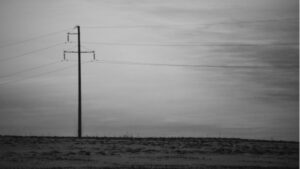
Emergency standby power is more than a safety net, it’s an operational necessity for many industries. By providing immediate, reliable power during outages, these systems prevent costly downtime, protect crucial functions, and ensure business continuity when it matters most. Through careful planning, proper equipment selection, and regular maintenance, businesses can safeguard their infrastructure and people against the risks of power failure. Whether it’s for healthcare, data protection, manufacturing, or public safety, a well-designed standby system is one of the smartest investments an organization can make.
Topic
Dealing with a Persistent Pest Issue? Here’s What You Need to Do

There is only one thing worse than discovering a pest infestation in your home, and that’s discovering that the pest Pest Issue infestation is still there after you have already taken pest control measures.
By their nature, pests are resilient. If they found a good breeding ground in your home, they will come back, especially if the pest control method you used to get rid of them wasn’t thorough enough.
That doesn’t mean you have to despair. If you have a recurring pest infestation, here are a few important steps you can take to make your property critter-free once and for all.
Hire a Professional Exterminator

If you’ve been trying to manage your pest issues on your own, it’s time to hire a professional exterminator. For persistent pest infestations, DIY solutions or products that you can buy at the local hardware store usually aren’t strong enough to make a difference.
Look for exterminators that are proven to provide lasting solutions to pest control issues. The team at North Fulton Pest Solutions, for instance, has been serving the Atlanta area for more than 50 years, which means they have plenty of experience with all kinds of infestations. Look for positive reviews or ask your neighbors for recommendations.
For persistent pest infestations, you may need multiple visits from an exterminator. Talk with the professionals you hire and make sure that they are transparent about their plans and how much it will cost.
Get Rid of Their Habitats

When pests keep coming back to a home, usually it’s because they found something there that they like. Go through your home and property to find potential habitats and sources of food that may be attracting pests. A professional exterminator can also help you analyze your property to find potential pest breeding grounds.
Throw out any clutter such as old newspapers, junk, or garbage bags, especially in out-of-the-way spaces like crawlspaces and attics. Clutter provides pests with a nesting ground. It can even be a source of food.
Standing water is another attraction for pests, especially mosquitoes and other bugs. Get rid of pools or places where puddles form when it rains. Go over your plumbing to find any hidden leaks that may be attracting pests.
Make Sure They Can’t Come In
There’s no point in making your home unwelcoming to pests if you’re unwittingly inviting them in. Go over your home and identify places where pests can get inside, such as cracks, open windows, or crawlspaces.
Seal off any potential entrance points for pests. That way, once you redo your pest control treatment, they won’t be able to come back.
Finding Pest Control Solutions That Last
Persistent pest infestations are the nightmare of every homeowner, but you can manage them with the right help. Make sure that your home is inhospitable to pests by getting rid of their habitats, food sources, and points of entry. That way, you can prevent future infestations.
To get rid of persistent infestations, you need help from a professional exterminator. They can provide treatments that remove long-lasting pest colonies and advise you on ways to prevent future infestations. It may take multiple visits, but a good exterminator will help you get rid of pests once and for all.
Topic
Important Factors to Consider When Planning a Funeral for a Loved One

Planning a funeral comes with emotional weight, personal responsibilities, and a long list of practical decisions. Grief and planning often don’t blend easily, which can make this time particularly overwhelming. Whether the loss was sudden or expected, the need to prepare a respectful, meaningful service remains. Decisions made during this time can shape how friends and family experience the memorial and how they begin their healing. Thoughtful planning doesn’t eliminate sorrow, but it helps bring clarity and purpose when comfort is needed most.
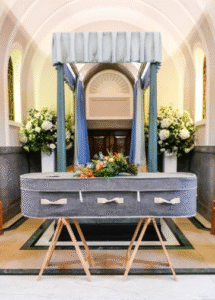
Professional Funeral Services and What They Offer
Working with experienced funeral professionals can help bring structure and sensitivity to an otherwise stressful process. Many people lean on these services to manage paperwork, coordinate logistics, and create an atmosphere that feels personal yet smooth. These professionals often offer packages that include transportation, preparation of the body, coordination with cemeteries or crematoriums, and arranging for celebrants or religious leaders. Planning every detail alone may be overwhelming during a period of grief. Families often seek guidance, and working with someone who understands how to balance tradition with personal preference can be reassuring. You can also learn more here, by exploring how funeral directors help design services that feel respectful and cohesive. This way, you won’t be left to handle every detail alone.
Budget and Financial Considerations
Funeral costs can vary widely based on location, type of service, burial or cremation choices, and specific wishes. While many families would prefer not to think about expenses during a time of loss, being clear about a budget can reduce stress later on. Planning with transparency helps avoid unplanned charges and emotional overspending.
It can be useful to begin with an itemized estimate and discuss any available payment options or funeral insurance policies the deceased may have held. Community resources, religious organizations, or local governments sometimes offer assistance as well. Balancing financial realities with meaningful planning creates space for a respectful service without long-term burden.
Personal Touches and Cultural Traditions
Every funeral is different because every person is different. Incorporating personal touches, whether a favorite song, family photos, or a particular color, can bring comfort to those attending. For some families, cultural customs guide the ceremony, dictating structure, attire, music, or rituals. Honoring those traditions can offer a sense of continuity and belonging, especially across generations.
Religious and spiritual customs may influence elements like burial versus cremation, the role of clergy, or the timing of services. In other cases, personal values or preferences may shape the service more than tradition. What matters is that the farewell feels honest and fitting. When families make space for personal expression, it often becomes easier to say goodbye.
Logistics and Timing
Timing affects nearly every aspect of funeral planning. This includes not just when the service will be held, but also how long family members have to travel, when religious or cultural requirements call for burial, and how quickly arrangements can be made. Short timelines often demand rapid decisions, which can feel rushed without clear priorities.
Details like securing a venue, confirming the availability of officiants or religious leaders, and printing memorial programs all require coordination. Travel arrangements for loved ones flying in, accommodations for out-of-town guests, or special seating for elderly relatives are all elements that must be balanced in a short time frame. Planning around these needs helps the day run more smoothly and allows mourners to focus on remembering rather than managing.
Cremation vs. Burial Decisions

This decision often comes down to religious beliefs, personal preferences, or the wishes of the deceased. Burial typically involves selecting a casket, plot, and headstone, along with interment services. Cremation, on the other hand, offers more flexibility regarding location and timing. Some families choose to hold a memorial service later, when more people can attend, or to scatter ashes in a place of significance.
There are emotional and practical differences between the two options. Burial may give families a permanent place to visit, while cremation may align with a desire for a more flexible or environmentally conscious approach. Some people plan ahead and make these decisions themselves, but if not, loved ones are left to choose what feels most fitting. Regardless of the path taken, clarity and shared decision-making can reduce conflict and regret.
Communication with Family and Loved Ones
When emotions run high, misunderstandings can easily happen. Communicating openly with family members about decisions, big or small, can prevent confusion and resentment. Sometimes one person takes the lead in making arrangements, but it helps if everyone understands what to expect and has a chance to share input.
Respecting diverse opinions within a family isn’t always simple, especially under stress. But maintaining transparency about decisions, timelines, and costs helps preserve relationships during a time that can either strengthen or strain family bonds. If disagreements arise, returning to what the deceased might have wanted can offer a guiding perspective.
Planning a funeral involves many layers, from emotional care to practical coordination. The choices made during this time can support both personal healing and collective remembrance. Whether through professional guidance, budget clarity, personal expression, or respectful timing, thoughtful planning helps honor a life in a way that brings comfort to those left behind.

 Cartoon1 year ago
Cartoon1 year agoUnlocking the Potential of Nekopoi.care: A Comprehensive Guide

 Game1 year ago
Game1 year agoExploring Aopickleballthietke.com: Your Ultimate Pickleball Destination

 BUSINESS1 year ago
BUSINESS1 year agoWhat Companies Are In The Consumer Services Field

 BUSINESS1 year ago
BUSINESS1 year agoUnraveling the Mystery of 405 Howard Street San Francisco charge on Credit Card

 HOME IMPROVEMENT1 year ago
HOME IMPROVEMENT1 year agoVtrahe vs. Other Platforms: Which One Reigns Supreme?

 TECHNOLOGY1 year ago
TECHNOLOGY1 year agoThe Guide to Using Anon Vault for Secure Data Storage

 ENTERTAINMENT11 months ago
ENTERTAINMENT11 months agoUnderstanding Bunkr Album: A Comprehensive Guide

 ENTERTAINMENT1 year ago
ENTERTAINMENT1 year agoThe Epic Return: Revenge of the Iron-Blooded Sword Hound
















